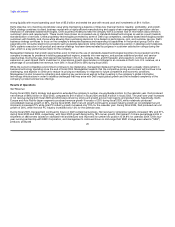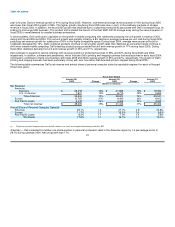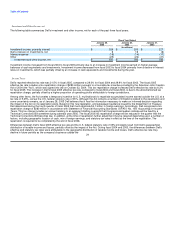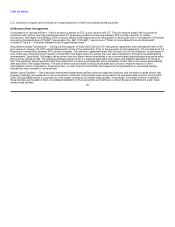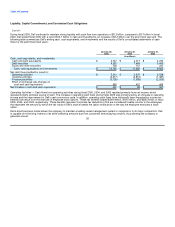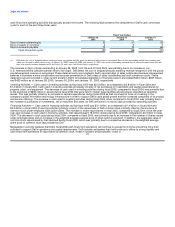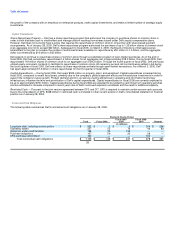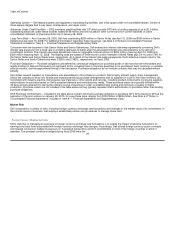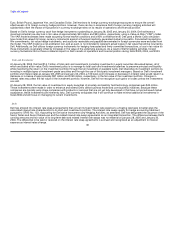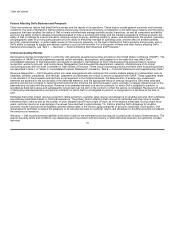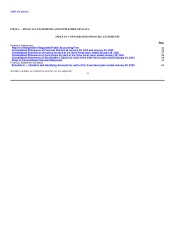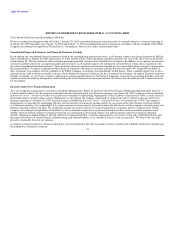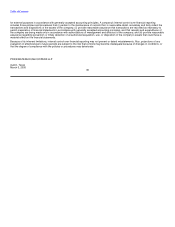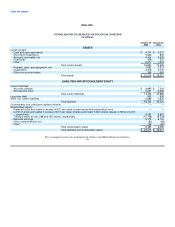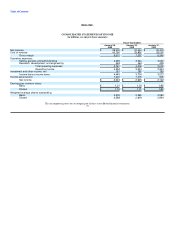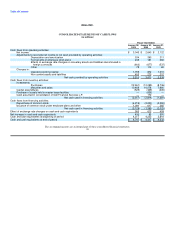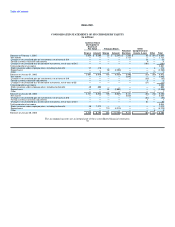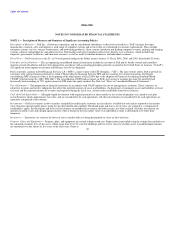Dell 2004 Annual Report Download - page 33
Download and view the complete annual report
Please find page 33 of the 2004 Dell annual report below. You can navigate through the pages in the report by either clicking on the pages listed below, or by using the keyword search tool below to find specific information within the annual report.
Table of Contents
Euro, British Pound, Japanese Yen, and Canadian Dollar. Dell monitors its foreign currency exchange exposures to ensure the overall
effectiveness of its foreign currency hedge positions. However, there can be no assurance Dell's foreign currency hedging activities will
substantially offset the impact of fluctuations in currency exchange rates on its results of operations and financial position.
Based on Dell's foreign currency cash flow hedge instruments outstanding at January 28, 2005 and January 30, 2004, Dell estimates a
maximum potential one-day loss in fair value of approximately $43 million and $53 million, respectively, using a Value-at-Risk ("VAR") model.
The VAR model estimates were made assuming normal market conditions and a 95% confidence level. Dell used a Monte Carlo simulation
type model that valued its foreign currency instruments against a thousand randomly generated market price paths. Forecasted transactions,
firm commitments, fair value hedge instruments, and accounts receivable and payable denominated in foreign currencies were excluded from
the model. The VAR model is a risk estimation tool, and as such, is not intended to represent actual losses in fair value that will be incurred by
Dell. Additionally, as Dell utilizes foreign currency instruments for hedging forecasted and firmly committed transactions, a loss in fair value for
those instruments is generally offset by increases in the value of the underlying exposure. As a result of Dell's hedging activities, foreign
currency fluctuations did not have a material impact on Dell's results of operations and financial position during fiscal 2005, 2004, and 2003.
Cash and Investments
At January 28, 2005, Dell had $14.1 billion of total cash and investments (including investments in equity securities discussed below), all of
which are stated at fair value. Dell's investment policy is to manage its total cash and investments balances to preserve principal and liquidity
while maximizing the return on the investment portfolio through the full investment of available funds. Dell diversifies its investment portfolio by
investing in multiple types of investment-grade securities and through the use of third-party investment managers. Based on Dell's investment
portfolio and interest rates at January 28, 2005 and January 30, 2004, a 100 basis point increase or decrease in interest rates would result in a
decrease or increase of approximately $97 million and $140 million, respectively, in the fair value of the investment portfolio. Changes in
interest rates may affect the fair value of the investment portfolio; however, Dell will not recognize such gains or losses unless the investments
are sold.
At January 28, 2005, the fair value of investments in equity securities of privately and publicly held technology companies was $43 million.
These investments were made in order to enhance and extend Dell's direct business model and core business initiatives. Because these
companies are typically early-stage companies with products or services that are not yet fully developed or that have not yet achieved market
acceptance, these investments are inherently risky. Dell currently anticipates that it will continue to make minimal additional investments in
fiscal 2006 and will focus on managing its current investments.
Debt
Dell has entered into interest rate swap arrangements that convert its fixed interest rate expense to a floating rate basis to better align the
associated interest rate characteristics to its cash and investments portfolio. The interest rate swaps qualify for hedge accounting treatment
pursuant to SFAS No. 133, Accounting for Derivative Instruments and Hedging Activities, as amended. Dell has designated the issuance of the
Senior Notes and Senior Debentures and the related interest rate swap agreements as an integrated transaction. The difference between Dell's
carrying amounts and fair value of its long-term debt and related interest rate swaps was not material at January 28, 2005 and January 30,
2004. The differential to be paid or received on the interest rate swap agreements is accrued and recognized as an adjustment to interest
expense as interest rates change. 30


